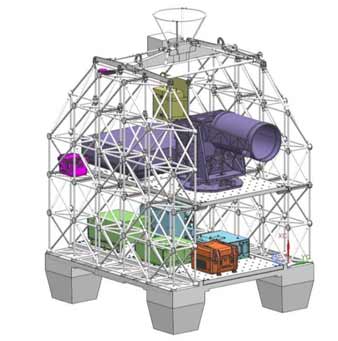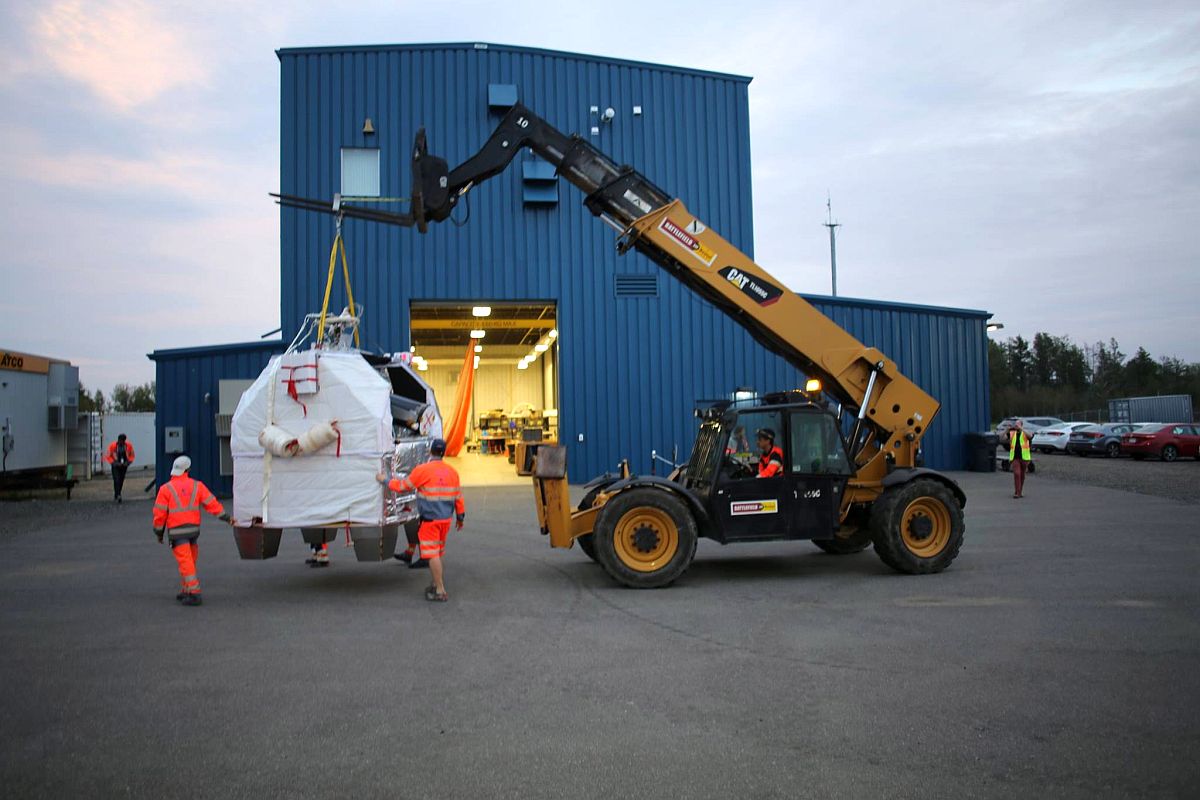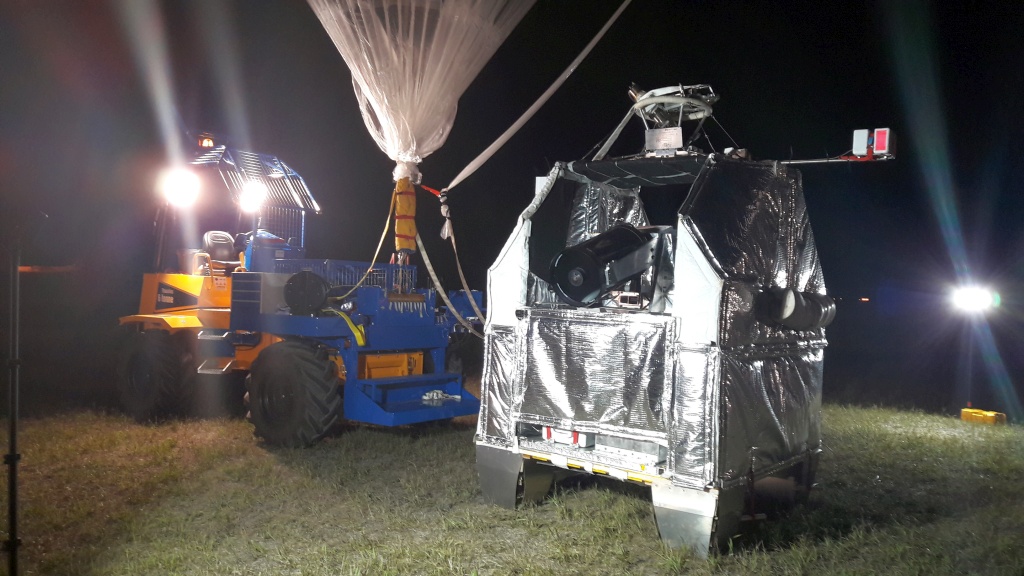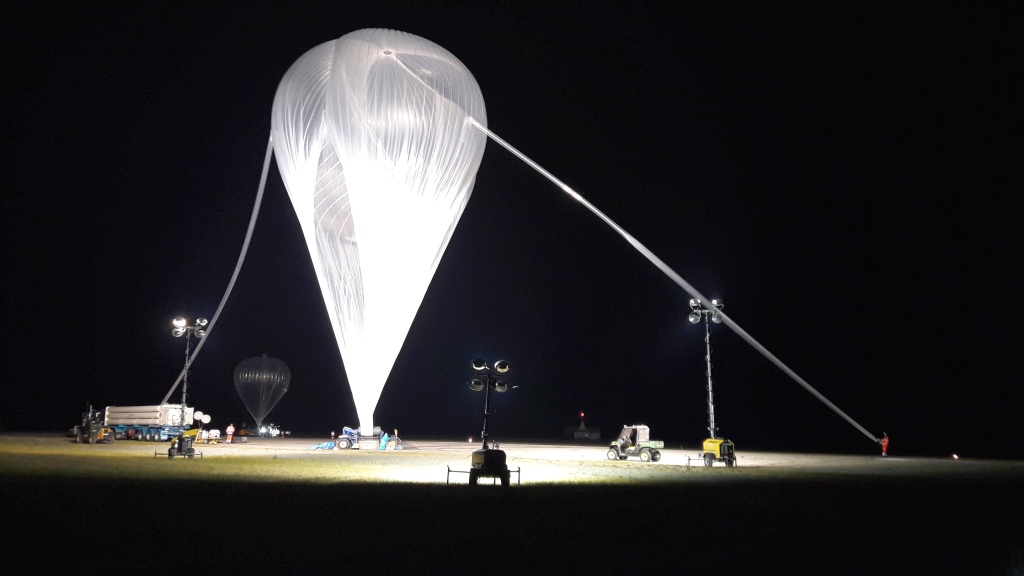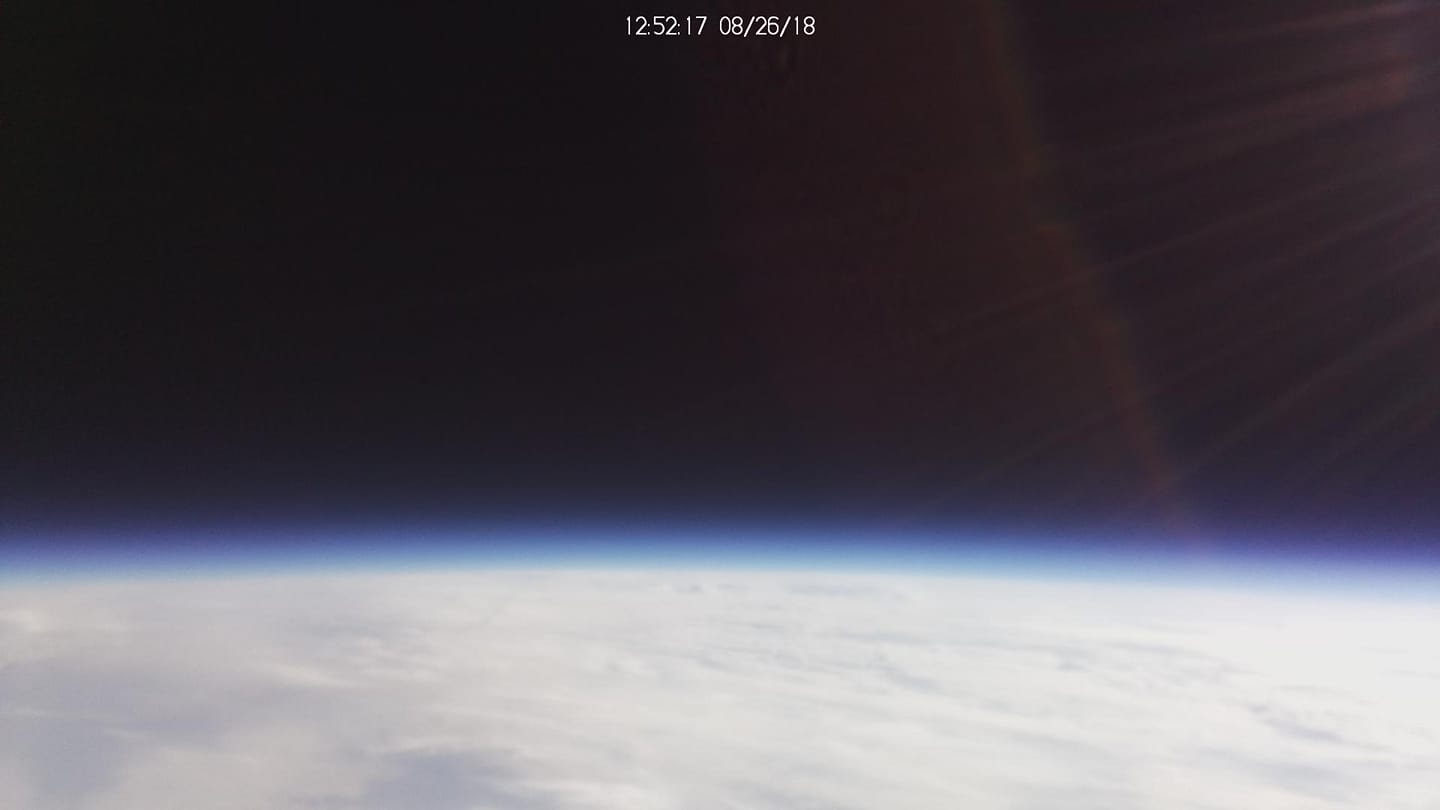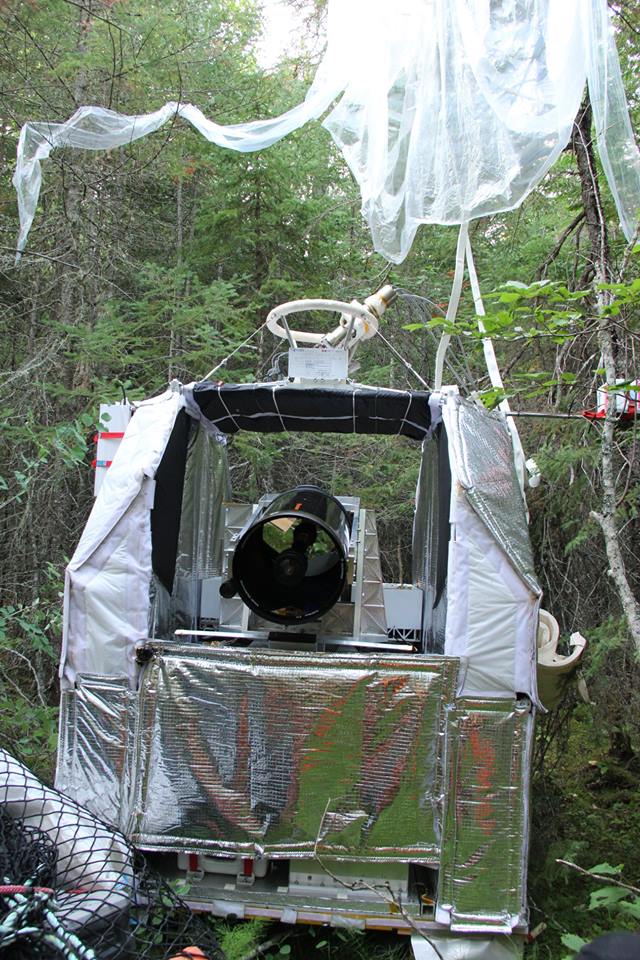Purpose of the flight and payload description
FAST is the acronym of Flights and Fieldwork for the Advancement of Science and Technology a funding initiative that supports space research in Canadian post-secondary institutions. FAST grants enable students (college, undergraduate and graduate) and young researchers (post-doctoral fellows) to gain hands-on experience in space-like missions, and support the development of space science and technologies.
For the FAST flight a CARMEN gondola was provided by CNES.
CARMEN is a multipayload stabilized gondola originally introduced in late 2012 by the Nacelles Pointees (Pointed Platforms) CNES team and was developed with several concepts in mind: modularity to allow the inclusion of several instruments devoted to the same or different research areas in one mission, reusability to overcome the difficult to adapt a platform specifically designed around an instrument to another, thus reducing costs and developing times and finally cargo volume which is maximized to allow the installation of many instruments onboard.
At left we can see an scheme of the distribution of experiments in the gondola used for the 2018 Canadian flight.
The design of the outer structure is based on the previous experience of the CNES using similar configurations of strong tubes or bars and balls as anchor point. The overall empty weight of the platform structure is near 275 kg and the space to accomodate the payloads is composed of 4 removable trays, which can support a weight of 100 kg, while the mass occupied by a single payload is of up to 400 kg. In addition, the cells that form the exterior walls of the gondola can also accommodate a total of 400 kg of scientific instruments or services gondolas (telemetry, telecommand and so on).
The experiments that participated in the FAST-CARMEN flight were:
Aerosol Limb Imager Version 2 an atmospheric monitoring tool developed by the University of Saskatchewan that measures the concentration of aerosols in the upper atmosphere using a unique optical device. The one flown in this mission wa an improved version of an instrument that was successfully deployed on a stratospheric balloon in 2014 and 2017. The upgraded version of ALI can detect a wider range of optical wavelengths, measuring both orientations of the polarization state. The development of the instrument was supported by the CSA's FAST funding initiative.
Canadian Atmospheric Tomography System (CATS) a tool developed by the University of Saskatchewan able to image vertical profiles of trace gases in the atmosphere, such as ozone and nitrogen dioxide. This system can improve in the future spatial resolution by sampling multiple atmospheric zones simultaneously, providing useful information for climate change studies. The development of CATS was funded by the CSA's Space Technology Development Program (STDP).
As part of the High-Contrast Imaging Balloon System (HiCIBas) a new type of Low-Order Wave Front Sensor (LOWFS) developed by the Université Laval and the Leiden University from Netherlands, was tested during the flight. This instrument is being developed as part of the HiCIBas project, for a generic precision pointing telescope system that could be used in future missions requiring sub-milli-arcsecond level pointing (e.g. high contrast imaging missions). The development counts with the collaboration of Nüvü Caméras, ABB, National Research Council Canada, SETI Institute, and NASA's Jet Propulsion Laboratory.
Payload Remote Interface, Sensor Suite and Mass Memory Subsystem (PRISM) developed by the Canadian Space Agency with collaboration of the Polytechnique Montréal and École de technologie supérieure (ETS), is a multi-purpose electronics box which provides onboard Ethernet ports for payloads and offer various services to users, such as real-time localization and attitude, during the entire flight. The instrument also monitors other components onboard the gondola, the platform carrying the experiments and payloads. This instrument is an improved version of a technology initially developed by students from École de technologie supérieure, and further advanced by the CSA.
SEDS CAN-SBX - HABOO the HABOO team from the University of Alberta, was selected by the SEDS (an organization that aims to provide students with research and development opportunities) as part of a pan-Canadian competition to design, build and fly their experiments. The HABOO team experiment was aimed to study the reaction of calcite as a substitute aerosol for solar radiation management, a potential tool for climate change mitigation.
Video of the launch operations and ascent of the balloon
Details of the balloon flight

Balloon launched on: 8/26/2018 at 3:20 utc
Launch site: Timmins Stratospheric Balloon Base, Ontario, Canada
Balloon launched by: Centre National d'Etudes Spatiales (CNES)
Balloon manufacturer/size/composition: Zero Pressure Balloon model 402z Airstar - 400.000 m3
Flight identification number: NIMBUS-5
End of flight (L for landing time, W for last contact, otherwise termination time): 8/26/2018
Balloon flight duration (F: time at float only, otherwise total flight time in d:days / h:hours or m:minutes - ): 12 h
Landing site: 280 km W of Timmins, Ontario, Canada
Campaign: STRATOSCIENCE 2018
Overall weight: 813 kg
The balloon, an Airstar 402z with a volume of 400.000 m3, was launched at 3:20 utc, on August 26, 2018 using the auxiliary balloon method. After reaching float altitude the balloon moved in a westward path, as we can see in the image at left which is a capture of the CNES realtime map of the mission.
Finally after 12 hours of flight, mission was terminated and the payload separated from the balloon. Landing of the instruments was in a forest zone located about 280 km west of the launch base.
External references
- Flights and Fieldwork for the Advancement of Science and Technology Funding Initiative Canadian Space Agency website
- 8 heures en ballon Journal Le Fil, Université Laval
- HiCIBaS : un télescope sur ballon stratosphérique pour l'imagerie haut-contraste d'exoplanètes Université Laval press release
- HiCiBas website Centre for optics, photonics ans laser, Université Laval
- HiClBaS, le chasseur d'exoplanètes en ballon, a été lancé ! Futura Sciences
14647If you consider this website interesting or useful, you can help me to keep it up and running with a small donation to cover the operational costs. Just the equivalent of the price of a cup of coffee helps a lot.

